Porter-Cable PCE211 Handleiding
Porter-Cable
Schroefmachine
PCE211
Bekijk gratis de handleiding van Porter-Cable PCE211 (24 pagina’s), behorend tot de categorie Schroefmachine. Deze gids werd als nuttig beoordeeld door 48 mensen en kreeg gemiddeld 4.3 sterren uit 24.5 reviews. Heb je een vraag over Porter-Cable PCE211 of wil je andere gebruikers van dit product iets vragen? Stel een vraag
Pagina 1/24

1/2 inch (12.7mm) Impact Wrench with hog ring anvil
Clé à Chocs avec enclume anneau porc de
12.7mm (1/2 po)
llave de impacto con yunque de anillo del cerdo de 12.7mm (1/2 pul)
CATALOG NUMBER
N° DE CATALOGUE
CATÁLOGO N°
PCE211
Instruction manual
Manuel d’instructions
Manual de’instrucciones
www.portercable.com
INSTRUCTIVO DE OPERACIÓN, CENTROS DE SERVICIO Y PÓLIZA DE GARANTÍA.
ADVERTENCIA:
LÉASE ESTE INSTRUCTIVO ANTES DE USAR
EL PRODUCTO.
Thank you for choosing PORTER-CABLE! To register your new product, go to:
www.portercable.com/ServiceAndSupport/ProductRegistration.aspx
Merci d’avoir choisi PORTER-CABLE! Consulter le site Web www.portercable.
com/ServiceAndSupport/ProductRegistration.aspx pour enregistrer votre
nouveau produit.
Gracias por elegir PORTER-CABLE usted! Para registrar su nuevo producto,
visite: www.portercable.com / ServiceAndSupport / ProductRegistration.aspx

2
General Power Tool Safety Warnings
WARNING: Read all safety warnings,
instructions, illustration and specifications
provided with this power tool. Failure to
follow all instructions listed below may result
in electric shock, fire and/or serious injury.
SAVE ALL WARNINGS AND INSTRUCTIONS
FOR FUTURE REFERENCE
The term “power tool” in the warnings refers
to your mains-operated (corded) power tool or
battery-operated (cordless) power tool.
1) WORK AREA SAFETY
a) Keep work area clean and well lit.
Cluttered or dark areas invite accidents.
b) Do not operate power tools in explosive
atmospheres, such as in the presence
of flammable liquids, gases or dust.
Power tools create sparks which may
ignite the dust or fumes.
c) K
eep children and bystanders away
while operating a power tool. Distractions
can cause you to lose control.
2) ELECTRICAL SAFETY
a)
Power tool plugs must match the
outlet. Never modify the plug in any
way. Do not use any adapter plugs
with earthed (grounded) power tools.
Unmodified plugs and matching outlets
will reduce risk of electric shock.
b) Avoid body contact with earthed or
grounded surfaces such as pipes,
radiators, ranges and refrigerators.
There is an increased risk of electric
shock if your body is earthed or
grounded.
c) Do not expose power tools to rain
or wet conditions. Water entering
a power tool will increase the risk of
electric shock.
d) Do not abuse the cord. Never use
the cord for carrying, pulling or
unplugging the power tool. Keep cord
away from heat, oil, sharp edges or
moving parts. Damaged or entangled
cords increase the risk of electric shock.
e) When operating a power tool
outdoors, use an extension cord
suitable for outdoor use. Use of a
cord suitable for outdoor use reduces
the risk of electric shock.
f)
If operating a power tool in a damp
location is unavoidable, use a
ground fault circuit interrupter (GFCI)
protected supply. Use of a GFCI
reduces the risk of electric shock.
3) PERSONAL SAFETY
a) Stay alert, watch what you are
doing and use common sense
when operating a power tool. Do
not use a power tool while you
are tired or under the influence of
drugs, alcohol or medication. A
moment of inattention while operating
power tools may result in serious
personal injury.
b) Use personal protective equipment.
Always wear eye protection.
Protective equipment such as dust
mask, nonskid safety shoes, hard
hat, or hearing protection used for
appropriate conditions will reduce
personal injuries.
c) Prevent unintentional starting.
Ensure the switch is in the off
position before connecting to
power source and/ or battery pack,
picking up or carrying the tool.
Carrying power tools with your finger
on the switch or energizing power
tools that have the switch on invites
accidents.
d)
Remove any adjusting key or wrench
before turning the power tool on.
A wrench or a key left attached to a
rotating part of the power tool may
result in personal injury.
e) Do not overreach. Keep proper
footing and balance at all times.
This enables better control of the
power tool in unexpected situations.
f) Dress properly. Do not wear loose
clothing or jewelry. Keep your hair,
clothing and gloves away from
moving parts. Loose clothes, jewelry
or long hair can be caught in moving
parts.
g) If devices are provided for the
Definitions: Safety Alert Symbols and Words
This instruction manual uses the following safety alert symbols and words to alert you
to hazardous situations and your risks of personal injury or property damage.
DANGER: Indicates an imminently hazardous situation which, if not avoided, will
result in death or serious injury.
WARNING: Indicates a potentially hazardous situation which, if not avoided,
could result in death or serious injury.
CAUTION: Indicates a potentially haz ard ous situation which, if not avoided, may
result in minor or mod er ate injury.
NOTICE: Used without the safety alert symbol indicates potentially hazardous
situation which, if not avoided, may result in property damage.

3
connection of dust extraction and
collection facilities, ensure these
are connected and properly used.
Use of dust collection can reduce
dust-related hazards.
h) Do not let familiarity gained from
frequent use of tools allow you to
become complacent and ignore
tool safety principles. A careless
action can cause severe injury within
a fraction of a second.
4) POWER TOOL USE AND CARE
a) Do not force the power tool. Use
the correct power tool for your
application. The correct power tool will
do the job better and safer at the rate
for which it was designed.
b) Do not use the power tool if the
switch does not turn it on and
off. Any power tool that cannot
be controlled with the switch is
dangerous and must be repaired.
c) Disconnect the plug from the
power source and/or the battery
pack from the power tool before
making any adjustments, changing
accessories, or storing power
tools. Such preventive safety
measures reduce the risk of starting
the power tool accidentally.
d) Store idle power tools out of
the reach of children and do not
allow persons unfamiliar with the
power tool or these instructions
to operate the power tool. Power
tools are dangerous in the hands of
untrained users.
e) Maintain power tools. Check for
misalignment or binding of moving
parts, breakage of parts and any
other condition that may affect the
power tool’s operation. If damaged,
have the power tool repaired before
use. Many accidents are caused by
poorly maintained power tools.
f) Keep cutting tools sharp and clean.
Properly maintained cutting tools with
sharp cutting edges are less likely to
bind and are easier to control.
g) Use the power tool, accessories
and tool bits, etc. in accordance
with these instructions, taking into
account the working conditions
and the work to be performed.
Use of the power tool for operations
different from those intended could
result in a hazardous situation.
h) Keep handles and grasping
surfaces dry, clean and free from
oil and grease. Slippery handles and
grasping surfaces do not allow for
safe handling and control of the tool
in unexpected situations.
5) SERVICE
a) Have your power tool serviced by a
qualified repair person using only
identical replacement parts. This will
ensure that the safety of the power tool
is maintained.
SPECIFIC SAFETY RULES
• Hold power tool by insulated gripping
surfaces, when performing an
operation where the fastener may
contact hidden wiring or its own cord.
Fastener contacting a “live” wire may
make exposed metal parts of the power
tool “live” and could give the operator an
electric shock.
•
Wear ear protectors with impact drivers.
Exposure to noise can cause hearing loss.
• Use clamps or another practical way
to secure and support the work piece
to a stable platform. Holding the work
by hand or against your body leaves it
unstable and may lead to loss of control.
• When not in use, place tool on its side on
a stable surface where it will not cause a
tripping or falling hazard. Some tools with
large battery packs will stand upright but
may be easily knocked over.
• Keep your hair, clothing, and gloves
away from air vents. Air vents often cover
moving parts in which these items can be
caught.
• Hold tool firmly with two hands. Loss
of control can cause personal injury.
•
Wear safety goggles or other eye
protection. Hammering and drilling operations
cause chips to fly. Flying particles can cause
permanent eye damage.
• Bits, sockets and tools get hot during
operation. Wear gloves when touching them.
• Do not operate this tool for long periods of
time. Vibration caused by tool action may be
harmful to your hands and arms. Use gloves
to provide extra cushion and limit exposure by
taking frequent rest periods.
• Wear appropriate personal hearing
protection during use. Under some
conditions and duration of use, noise from
this product may contribute to hearing
loss.
WARNING: Impact wrenches are not
torque wrenches. Do not use this tool for
tightening fasteners to specified torques. An
independent, calibrated torque
measurement device such as a torque
wrench should be used when under
tightened or over tightened fasteners can
lead to the failure of the joint.
WARNING: ALWAYS use safety
glasses. Everyday eyeglasses are NOT
safety glasses. Also use face or dust mask
if drilling operation is dusty. ALWAYS
WEAR CERTIFIED SAFETY EQUIPMENT:
• ANSI Z87.1 eye protection (CAN/
CPA Z94.3),
Product specificaties
| Merk: | Porter-Cable |
| Categorie: | Schroefmachine |
| Model: | PCE211 |
Heb je hulp nodig?
Als je hulp nodig hebt met Porter-Cable PCE211 stel dan hieronder een vraag en andere gebruikers zullen je antwoorden
Handleiding Schroefmachine Porter-Cable

29 April 2023

8 April 2023

20 Februari 2023

1 Februari 2023

19 November 2022
Handleiding Schroefmachine
- Vonroc
- Bavaria
- Fieldmann
- Basetech
- Laserliner
- Parkside
- Skil
- Worx
- Truper
- Proviel
- Easymaxx
- Toolcraft
- AEG
- Draper
- Weidmüller
Nieuwste handleidingen voor Schroefmachine
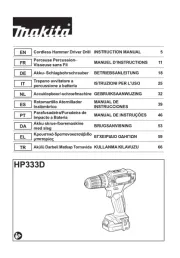
15 Juli 2025
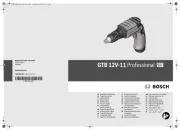
15 Juli 2025
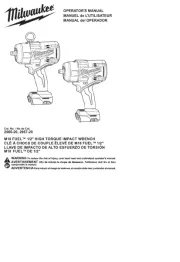
14 Juli 2025
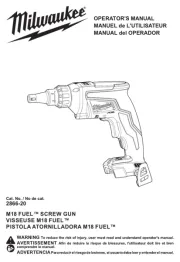
14 Juli 2025
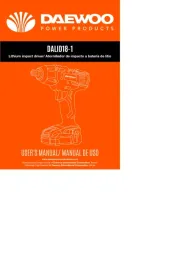
5 Juli 2025
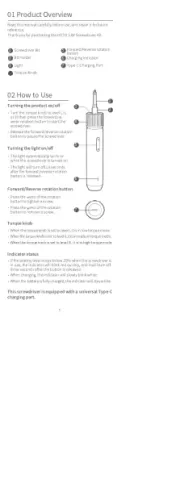
5 Juli 2025
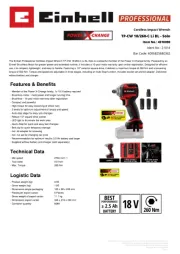
5 Juli 2025
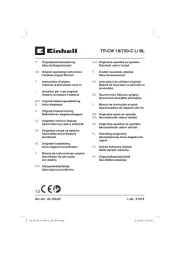
4 Juli 2025

4 Juli 2025

4 Juli 2025